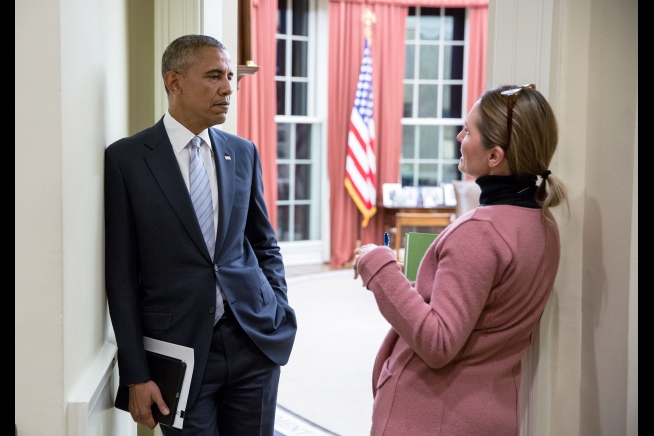
Official White House Photo by Pete Souza
President Barack Obama talks with Senior Advisor Shailagh Murray in the Outer Oval Office earlier this month.
Last week President Obama released his 2017 budget including at least one game-changing idea we should really be talking about. Not because people in the know expect it to pass—it won’t—but because it recognizes a basic truth that most people don’t “get” about a critical issue.
The president’s big idea is about ending homelessness. His plan, based on greatly expanded housing voucher programs and rapid rehousing assistance, is to end homelessness for families with children by 2020. He wants to end homelessness in the fastest growing segment of the homeless population in three years!
This comes on top of the mostly successful effort to end chronic veteran homelessness. A large number of states and cities have already declared victory on that front, including New York City. Whether you accept the “victory” or not, incredible progress has occurred toward ending veteran homelessness over the last three years using the same model: a big increase in veteran housing vouchers and creating new veteran housing.
So why talk about the president’s idea, big or not, if no one expects it to be funded? Because maybe, just maybe, it will jump-start the national conversation that can accomplish the one last thing needed before we can actually end modern day homelessness as we know it. That’s to raise public consciousness that we can actually end it.
In my role as a homeless policy advocate I try to convince people of three things I’m confident about. First, policy choices created modern day homelessness. Second, better policies can end it—we can end the homelessness crisis. Third, over time we can end homelessness without spending more money than we’re already spending to not end homelessness.
Usually when I make those arguments someone quizzically says, “You mean we could do that sometime in the distant future, maybe in the next generation?”
Obviously homelessness policy advocates, like me, haven’t done a very good job getting the point across. So to be clear, we can start right now and we can end modern day homelessness in just a few years. The success in battling veteran homelessness proves we can. The president’s proposal to end homelessness among families with children over three years is testament to it.
Former HUD Secretary Shaun Donovan often referred to a University of Pennsylvania study showing “it costs about $40,000 a year for a homeless person to be on the streets.” That study, led by Dr. Dennis Culhane, a respected expert, documented a cost of $40,451 annually just for avoidable emergency room and hospital use, mental health interventions and the costs of police and corrections involvement.
President George W. Bush’s homelessness czar, Philip Mangano, said “…you could either sustain people in homelessness for $35,000 to $150,000 a year, or you could literally end their homelessness for $13,000 to $25,000 a year.” That’s true in New York City where our rental subsidies targeted to help individuals and families move from shelter to stable housing require subsidized tenants to pay 30% of their gross household income (about $300 a month for a single person on Social Security Disability, for example), on rents from just under $1,000 to about $1,200 a month.
We can solve this crisis. It is the right thing to do. It’s the best outcome for individuals and families suffering homelessness. I’s better for neighborhoods and our city. And study after study shows not just that we can afford it, but that we can actually save significant public resources doing it.
So what’s holding us back? The essential missing piece may be the knowledge, with confidence, that we can end homelessness as we know it. And we can.
Jeff Foreman writes from New York City where he lives with his wife and dog, and works as Policy Director for Care for the Homeless.







